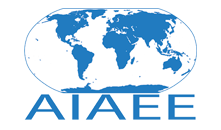Keywords
international experiences, international program benefits and barriers, countries of interest, study abroad, study abroad preferences
Abstract
The University of Arkansas has a campus-wide goal of 25 percent of students participating in an international program prior to graduation. This created concern because only three percent of Dale Bumpers College of Agricultural, Food and Life Sciences (Bumpers College) students participated in an international program prior to 2012. For five years, the Bumpers College International Programs Office (IPO) has assessed students to determine their perceived benefits, barriers, and needs in an effort to design international programs of interest and increase student participation. In this study, Bumpers College students were surveyed to determine perceived benefits and barriers to participating in an international program and identify the countries of interest in visiting. Instruments were administered via paper form to 1,165students enrolled in large section courses in fall 2016. Using a six-point Likert-type scale, students’ believed international program participation “looks goodon a resume” with a mean of 5.46 (SD = 0.77). The least important statement was “increased employability” with a mean of 4.92 (SD = 1.00). Students slightly agreed or agreed to all questionnaire benefit statements. The barrier statement “costs too high” was identified as the most important with a mean of 4.79 (SD = 1.12). The least important statement was “an international program will not have an impact on my future career” with a mean of 2.12 (SD = 1.21). About 72% of students were willing to participatein an international experience in a European country. Recommendations for practice and research are discussed and identified limitations are provided
Rights Statements
This Item is protected by copyright and/or related rights. You are free to use this Item in any way that is permitted by the copyright and related rights legislation that applies to your use. For other uses you need to obtain permission from the rights-holder(s).
Recommended Citation
Edgar, L. D.,
Edgar, D. W.,
&
Hansen, M. J.
(2018).
College of Agricultural, Food, and Life Sciences International Education: Students’ Preferred Location of Travel and Perceptions of Benefits and Barriers.
Journal of International Agricultural and Extension Education, 25(1), 89-99.
DOI: https://doi.org/10.5191/jiaee.2018.25108



